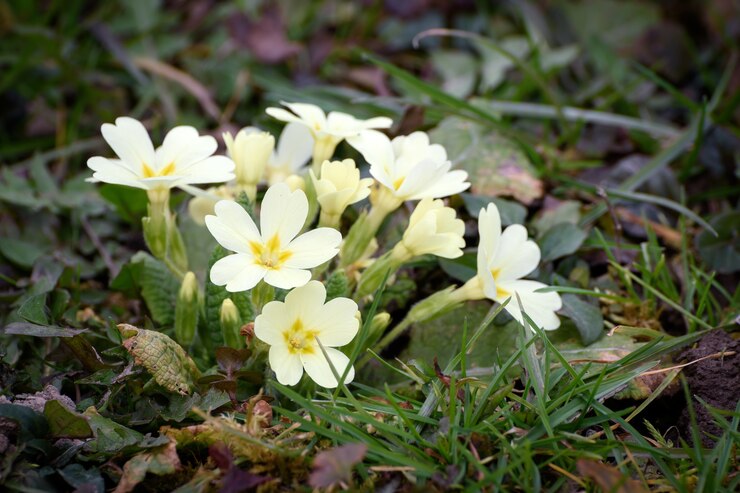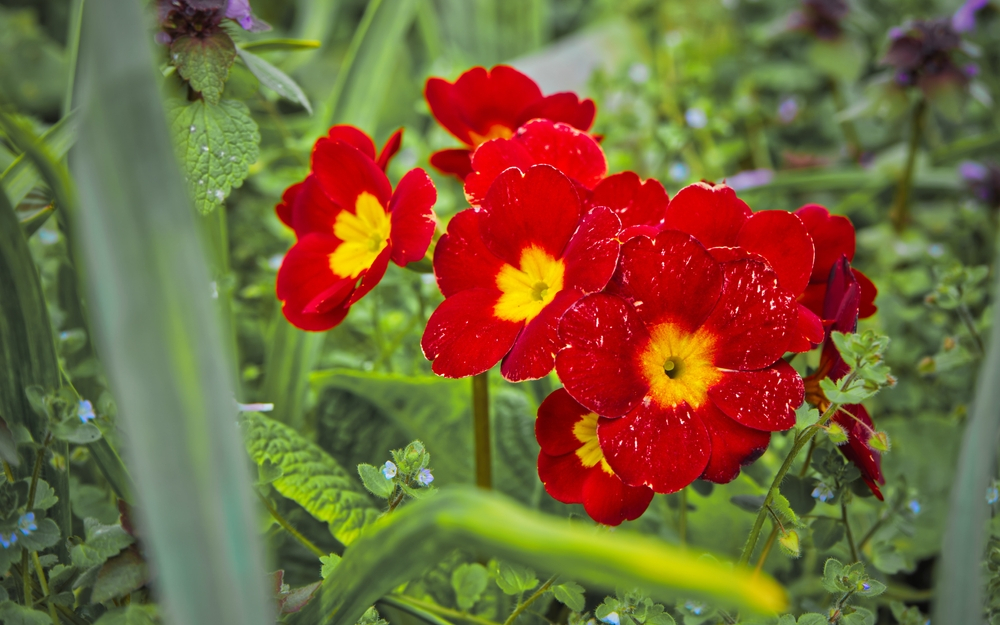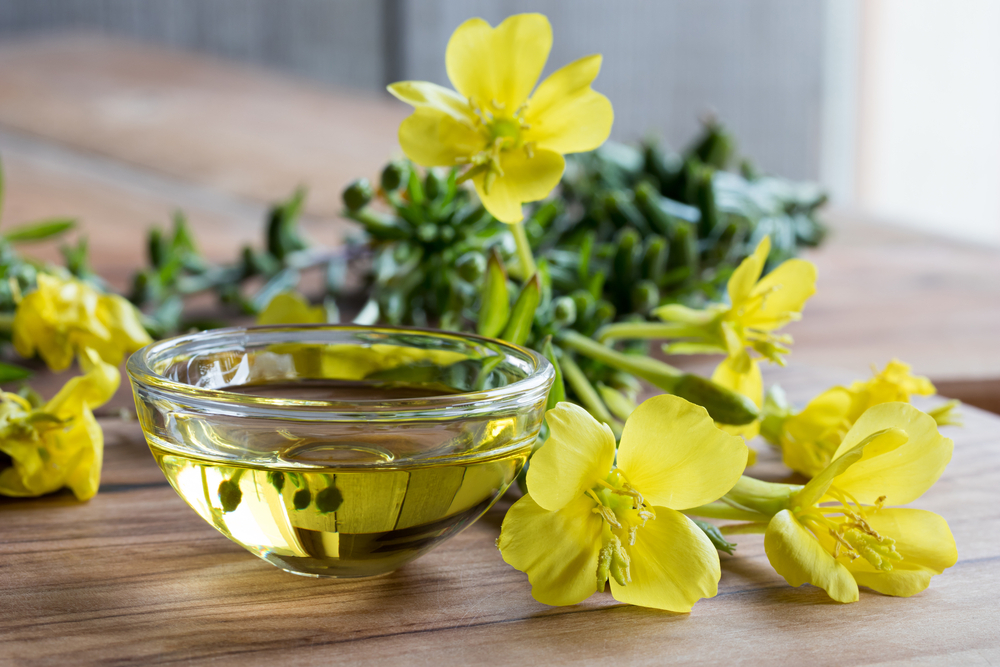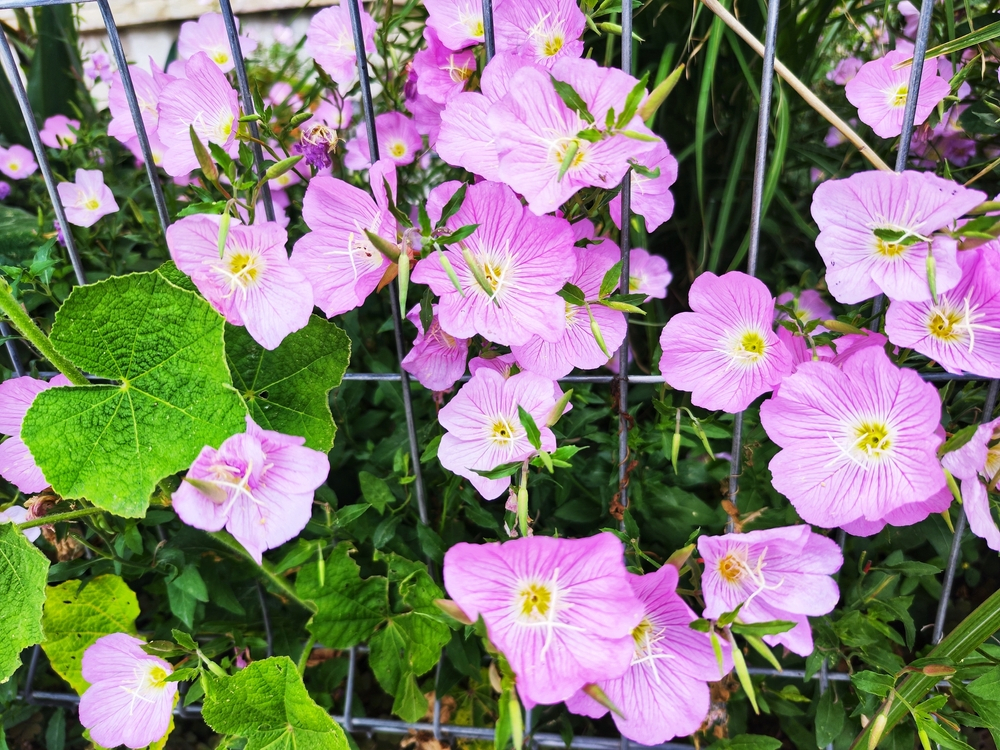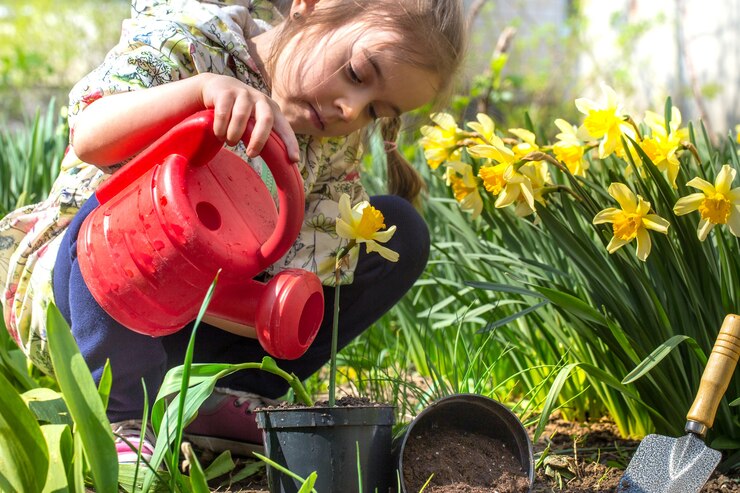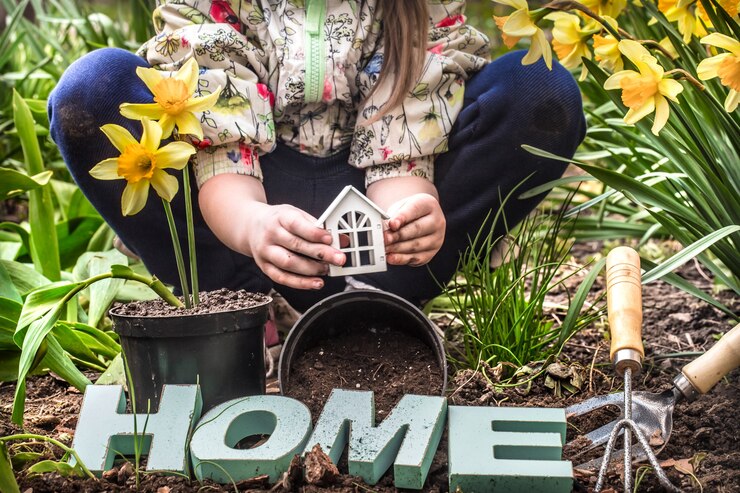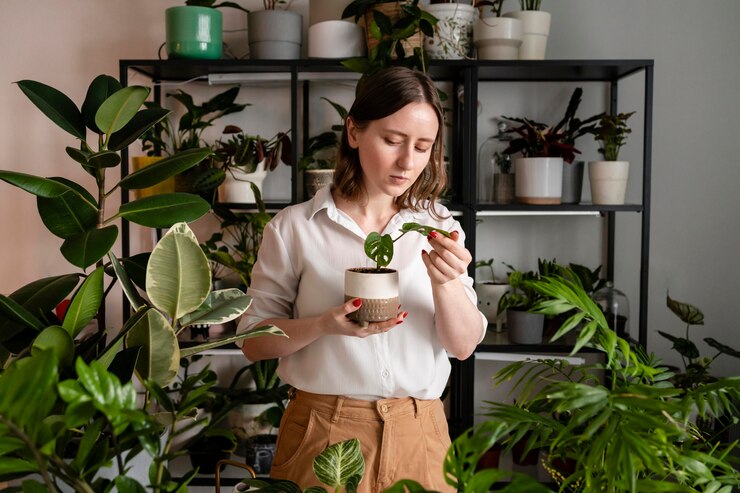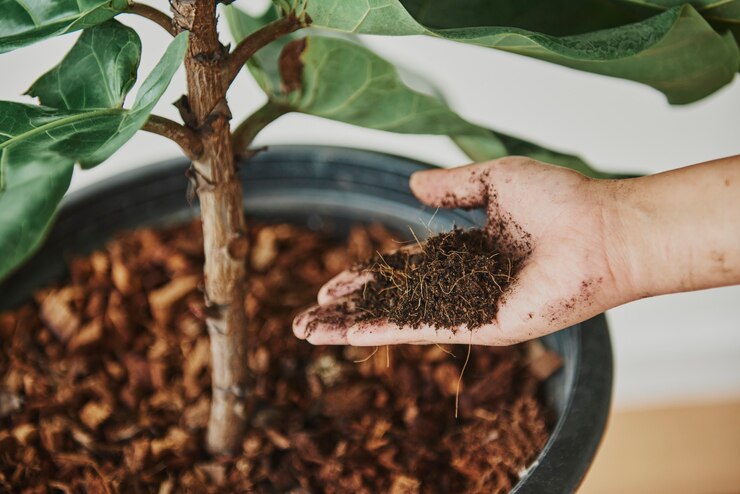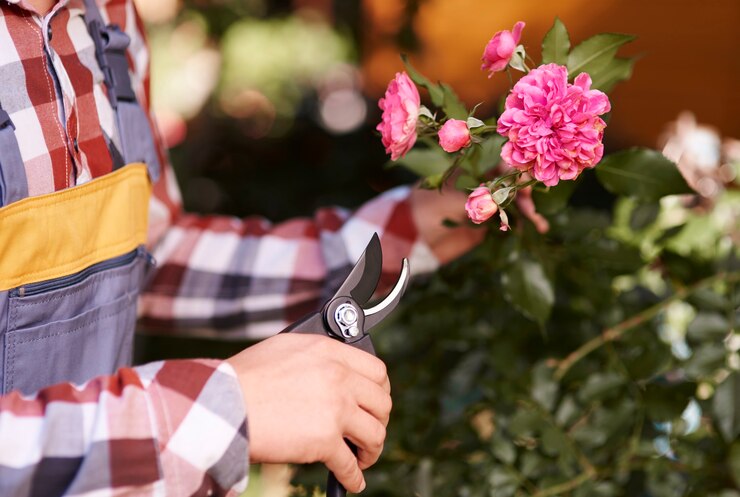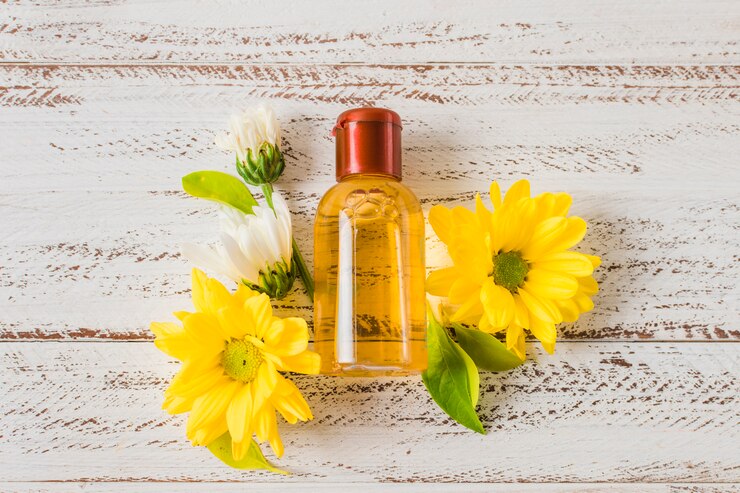The beautiful primrose flowers symbolise simplicity and elegance. These charming blooms have graced gardens for centuries. Telling tales of beauty and grace.
In this article, we explore the world of primroses in depth. Discovering their origins, meanings, and the vibrant spectrum of colours they unfold.
Brought to you by AHH Flowers, a Perth-based florist creating delightful bouquets. This blog post invites you to find the timeless attraction of primrose flowers and how you can grow them in your home garden.
History Of Primroses
Primrose flowers have been around for a long time. We are talking centuries here.
But guess what?
We don’t even know where they first came from or who discovered them. What we do know is that back in 1753. A smart Swedish botanist declared that these flowers belong to the Primula genus.
The earliest mention of primroses goes way back to 1597. When they showed up in a book called “The Herball: or, Generall historie of plantes.”
These flowers are native to Europe. There’s even a rumour that they were Shakespeare’s favourite flowers. Because he put them in lots of his plays.
And here’s something cool.
Primroses have a special connection with fairies. In old English stories folks thought that if you ate a primrose, you might actually see a fairy.
Imagine kids all over the place munching on primroses. Hoping to spot a magical creature – and who can blame them!
People used to believe that leaving primroses on their doorstep would make fairies bless their houses. Also, if you put these flowers in a cowshed. It was like telling the fairies, “Hands off the milk, it’s for us!”
Even in Ireland, where fairy stories are a big deal. Primroses were thought to keep away evil spirits.
Primrose Meaning
The primrose is a special flower that shows up early in spring, one of the first to bloom. Its name comes from the Latin word ‘primus,’ which means ‘first.’
So, primrose meaning symbolises youth, renewal, and optimism – all the good vibes!
Back in the Victorian era, people loved sending secret messages through flowers. A cool trend called, floriography. Well, during those times primrose meaning was like saying, “Hey, I’ve got a little crush on you!”
How adorable is that?
We should bring back the tradition of saying things with flowers!
Symbolism of Primrose Colour
What color is primrose?
Primroses come in various colours. Each tells its own little story.
The most common primrose colour you’ll spot in woodlands is YELLOW.
But primrose can also flaunt hues like white, orange, pink, and red. Let’s take a closer look at what each primrose color symbolises.
White Primrose
White primrose is a symbol of sadness and mourning.
The white primrose color carries a melancholic message. They symbolize sadness and mourning. Making them a thoughtful choice when expressing sympathy or remembrance for someone who has recently passed away.
Red Primrose
Red primrose is a symbol of passion, love, and a deep sense of longing.
Now, if you’re looking for a splash of joy. Red primroses are the way to go!
They symbolise passion, young love, charm, and that sweet feeling of longing. Perfect for surprising a new romantic partner. Or gifting it to someone you’ve had a crush on.
Yellow Primrose
Yellow primrose is a symbol of happiness, warmth, and love.
Yellow primroses are like rays of sunshine captured in a flower. They symbolise happiness, warmth, and love. Making them a wonderful choice for someone you’ve shared the journey of life with. Be it a long-term friend or a significant other through thick and thin.
Pink Primrose
Pink primrose is a symbol of femininity, grace, youth, and renewal.
If you’re aiming for a touch of elegance and grace. Pink primrose is your go-to. They carry meanings of femininity, grace, youth, and renewal. Making them ideal for expressing admiration for a special woman in your life.
When To Gift Someone Primroses Bouquet
The wonderful thing about primroses is that they’re a gift for any occasion. So, whether you’re sending a message of sympathy, love, joy, or admiration. Primrose colors speak for every sentiment.
Here are a few occasions when gifting a primrose bouquet is just perfect:
1. Congratulations
Imagine someone just graduated. What better way to say congrats than with a bunch of vibrant primroses? Their joyful colours match the celebratory mood perfectly.
2. Get Well Soon
When someone’s feeling under the weather. A bouquet of colourful primroses will brighten their day like sunshine. Who wouldn’t feel better with such cheerful flowers around!
3. Self-Care, A Pick-Me-Up Moment
And hey, don’t forget about yourself! Treating yourself to some primroses is self-care at its finest. Bring a little floral joy into your space and enjoy the positive vibes.
4. Spring Birthdays
For those lucky folks born in the spring. Primroses make an ideal birthday gift. Their vibrant hues align perfectly with the blooming season. Adding an extra touch of celebration.
5. You Don’t Need a Reason to Spread Joy With Primroses
Sometimes, you don’t need a reason to spread joy. Sending primroses to someone you care about just because you appreciate them is a wonderful gesture.
It’s like saying, “Hey, you’re awesome, and I wanted you to know!”
So, whether it’s a milestone, a pick-me-up, or a simple expression of appreciation. Primrose is there to add a dash of colour and happiness to any moment.
Types of Primrose
Let’s explore the variety of primroses. As they add a splash of uniqueness to gardens.
1. ‘Blue Zebra’ Primrose
Delicate white blossoms adorned with striking blue stripes. Giving this primrose a truly distinctive appearance. These beauties belong to the Primula vulgaris family and thrive in zones 4-8.
2. Japanese Primrose
The Primula japonica is a member of the candelabra group. These are 1- to 2-foot stems holding flowers in a candelabra style.
The primrose colour varies. Ranging from shades of pink and red to pure white. With rosettes of spoon-shaped leaves, these primroses thrive in zones 4-8.
3. ‘Quaker’s Bonnet’ English Primrose
The Primula vulgaris ‘Quaker’s Bonnet’ are double light orchid flowers. They are borne singly. These primroses grow to a height of 6 to 9 inches and flourish in zones 4-8.
4. Vial’s Primrose
Primula vialii features a rosette of large, puckered leaves. This unique primrose sends up leafless stems topped with spikes of small, brilliant purple flowers. That transition from light crimson buds.
It thrives in moist alkaline soil. These primroses can reach to height of 2 feet and are suited for zones 5-8.
Where to Plant Primrose
Choosing the right spot for your primrose makes all the difference. Here’s a handy guide on where to plant these delightful flowers:
1. Know Your Primrose Type
Sunlight and soil preferences of primroses can vary based on the species. Before you dig in. Get to know the specific needs of your primrose type.
✓ Are they alpine, needing more sun?
✓ Or woodland, growing in part shade?
Understanding this is the first step.
2. Alpine Primrose Species
If you’ve got alpine primroses. They are the sun lovers of the bunch.
They usually enjoy soaking up more sunlight. However, they do just fine in part shade too. So, give them a sunny spot.
3. Woodland Primrose Types
Now, if you have woodland primroses. They are a bit more delicate. Too much direct sun, and they start wilting.
They prefer the cool shade. So, find them a cozy spot with some part shade.
4. Grow Primrose as Beds or Borders in Your Garden
Primroses like the all-stars bring colour and fragrance wherever they go. Whether you’re looking to spruce up beds, borders, or containers.
Primroses fit right in.
5. Let Primroses Naturalize Your Lawn
Here’s a fun idea.
Let your primroses naturalize parts of your lawn. Allow them to spread, creating a natural, colourful carpet.
How to Grow Primrose Plants In Your Home Garden
Here’s a simple guide to help you nurture these charming plants in your garden:
1. Timing is Key: Pick the Right Season
Choose the springtime for your primrose planting adventure. While growing from seeds can be a bit tricky. You can up your chances by sowing them indoors over the winter.
Once they’ve sprouted into seedlings. It’s time to plant them in the garden in the spring.
2. Nursery Shortcut
If you’re eager to skip the seed-growing challenges. No worries!
Head to your local nursery and pick up primrose plants in the colour you desire. It’s a foolproof way to ensure you get exactly what you want. Without the uncertainty of seed growing.
3. Planting Process
Now, let’s get those primroses into the garden.
Dig a hole that matches the width and depth of the planting container. Carefully take the primrose out of its container. Gently loosen the roots from the root ball. And settle it into the hole.
4. Backfill and Tamp
Cover the roots with soil.
Tamp the soil lightly – not too heavy. And then water them well.
5. Spacing for Best Growth
Set them apart by 6 to 12 inches.
Give your primroses some breathing room. This way, they have space to stretch, grow, and let the air circulate around them.
How to Grow Primrose | Step-by-Step Guide
Here’s a step-by-step guide to help you make more of these lovely plants.
A. Primrose Growing Through Divisions
- After the blooming period ends. Select a nursery-grown primrose you’d like to grow.
- Carefully lift the entire plant out of the ground. Treat it gently and keep the roots attached.
- Use your hands to separate a small section of the plant and its roots from the parent plant.
- If the division isn’t obvious. Go ahead and split the plant into two or more sections. Making sure each has roots and foliage.
- Immediately replant these divisions in separate spots. And don’t forget to give them a good drink of water.
B. Primrose Growing Through Seeds
- Start by preparing a coarse compost seed bed in a tray. Ideally from February through April. A bit of exposure to cold weather during this time helps in germination.
- Sprinkle the primrose seeds on the compost. No need to cover them. They like light to start their journey.
- Give them a gentle shower with water using a fine spray.
- Cover the tray with another one. Make sure to poke holes in it for sunlight to filter through. Weigh down the second tray with a rock.
- Set the tray outdoors in a sheltered area. Shielded from the elements. Make sure the compost never dries out.
- The seedlings grow in 3 to 6 weeks. Remove the top tray permanently. Wait until they have at least 4 leaves before planting them into separate pots.
Primrose Is An Easy-Care Plant | 8 Primrose Care Tips
Here are 7 simple tips to keep your primroses growing well.
1. Light
Most primrose varieties prefer a bit of shade, but some are sun-lovers. Find the sweet spot between part shade and full sun to keep them smiling.
2. Soil and Water
Keep your primroses in the Goldilocks zone – not too wet, not too dry.
Well-drained soil is a must for alpine species. While woodland types prefer rich, moist soil.
Hybrids Primrose types?
They’re the thirsty ones. So, water generously but avoid waterlogged conditions. Water when the top inch of soil feels dry. But don’t let them completely dry out.
3. Temperature and Humidity
Primroses prefer cooler temperatures. In hot weather, shield them from direct sun to prevent stress. If you’re in a warm climate. Consider them as annuals and provide shade during peak heat.
4. Fertilizer
Fertilize in early spring with a balanced or bloom-boosting fertilizer. A light feeding is sufficient. But be cautious not to overfeed. Excessive fertilizer can lead to leggy growth.
5. Winter Warmth
In colder season. Provide a layer of mulch around the base of the plant in late fall. To protect the roots from freezing temperatures.
6. Pruning
Give your primroses a haircut by deadheading them. Trim back any yellowing or damaged leaves for a tidier appearance.
This not only makes room for new blossoms. But also prevents them from spreading seeds everywhere. In the fall, tidy up by removing dead leaves for a neat and evergreen look.
7. Potting and Repotting
Potted primroses love a change of scenery. Move potted primrose indoors during extreme cold or heat.
Repot if they outgrow their container. By dividing or replanting in larger pots. Also, refresh the soil mix regularly. Ensure good drainage with a standard potting mix.
8. Pests and Other Problems
Guard against slugs and snails with a non-toxic slug bait. Send away spider mites or aphids with soapy water spray.
Brown spots or yellowing leaves?
It is a leaf spot. Remove infected leaves for better air circulation. Watch out for crown and root rot. Achieve this with good drainage. By improving the soil with compost or relocating to a well-drained spot.
Avoid excessive moisture and maintain proper spacing to prevent fungal infections.
Primrose Oil Benefits
Evening Primrose Oil (EPO) offers various health benefits:
- Fight Acne: It reduces skin redness and keeps it moisturized, making acne easier to manage.
- Soothe Eczema: It may make eczema better by improving skin hydration and calming inflammation.
- Boost Skin Health: EPO makes your skin more elastic, moist, firm, and resistant to feeling tired.
- Ease PMS Symptoms: It can ease PMS symptoms like breast swelling, irritability, bloating, and acne.
- Ease Breast Pain: For cyclical breast pain, EPO might help by blocking discomfort-causing substances.
- Reduce Hot Flashes: During menopause, it may reduce how often and how strong hot flashes feel.
- Support Heart Health: Some studies hint that EPO might be good for your heart, especially regarding cholesterol.
- Lessen Nerve Pain: It shows promise in reducing nerve pain symptoms like tingling or weakness.
- Soothe Bone Pain: EPO could bring relief to bone pain linked with conditions like arthritis.
EPO has many possible benefits. But more research is needed for clear proof.
Is it safe to use primrose oil during pregnancy?
Studies didn’t find any harmful effects for pregnant women. However, we still don’t have clear proof that it’s safe during pregnancy or breastfeeding. A few people mentioned getting headaches and upset stomachs from taking evening primrose oil pregnancy.
Always check with a healthcare provider before using EPO.
Brighten Your Life with Primrose Flowers
In conclusion, primroses stand as timeless symbols of beauty and connection with nature. the flower evening primrose rich history, vibrant colours, and varied types contribute to its charm.
Whether decorating your garden or gifting it on special occasions. Primrose brings a touch of elegance and sentiment. As easy-to-care-for plants, they offer a delightful addition to any space.
Are you looking to surprise a loved one?
AHH Flowers bouquets promise a delightful experience. Order now and let the magic of primroses from AHH Flowers make your moments magical.
Primrose FAQs
- What plants go well with primroses?
Pair your primroses with other shade-loving plants like ferns, hostas, and astilbe in your garden.
- How many years does a primrose plant live?
A primrose plant can last up to five years if it gets the right care.
- Where do I put my primroses at home?
Put your primrose plant in a spot with bright but not direct sunlight. A sunny windowsill facing north is a great choice.
- Who should avoid evening primrose oil?
If you take blood thinners, certain blood pressure medications, or the HIV treatment lopinavir, avoid evening primrose oil, as it may interact with these medications.
- Who shouldn’t take evening primrose oil?
EPO (Evening Primrose Oil) can interact with some medications. So, people who take blood thinners, blood pressure medications, or HIV treatment, lopinavir should not take EPO.





